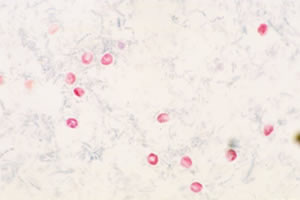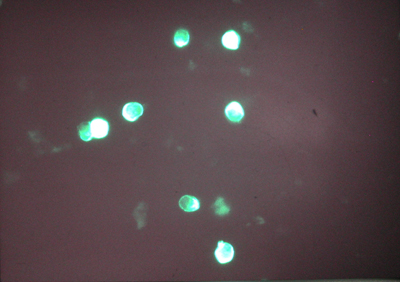Coccidia
Cryptosporidium parvum (iodine stain) |
 |
| Characteristics |
Parasite will not take up iodine Uses a traunt stain - red to pink Mostly found in daycares with small children |
| Size | Very small |
| Pathogenic | YES |
Cryptosporidium parvum (flourescent stain) |
 |
